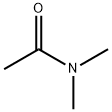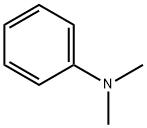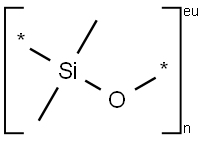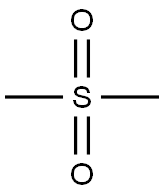Dimethyldiselenide
Synonym(s):Methyl diselenide
- CAS NO.:7101-31-7
- Empirical Formula: C2H6Se2
- Molecular Weight: 188.01
- MDL number: MFCD00008254
- EINECS: 230-410-7
- SAFETY DATA SHEET (SDS)
- Update Date: 2025-07-04 15:09:16

What is Dimethyldiselenide?
Chemical properties
orange liquid with a very unpleasant smell
The Uses of Dimethyldiselenide
Dimethyl diselenide is a powerful reagent used for identification of distonic radical cations
What are the applications of Application
Dimethyl diselenide is a powerful reagent used for identification of distonic radical cations
Definition
ChEBI: Dimethyl diselenide is an organoselenium compound that is diselane covalently bound to two methyl groups. It has been detected in onion-family vegetables and soft-necked garlics. It induces ER stress and toxic protein aggregation in the budding yeast, S. cerevisiae and used as a reagent to identify distonic radical cations. It has a role as a bacterial metabolite, a mammalian metabolite, a plant metabolite and a human xenobiotic metabolite.
General Description
Dimethyl diselenide is a volatile selenium species and its determination in biological samples by HPLC-inductively coupled argon plasma mass spectrometry was reported. Selenium alkylation with dimethyl diselenide was reported by solid-phase microextraction gas chromatography-mass spectrometry.
Properties of Dimethyldiselenide
| Melting point: | -82.2 °C |
| Boiling point: | 155-157 °C (lit.) |
| Density | 1.987 g/mL at 25 °C (lit.) |
| refractive index | n |
| Flash point: | 140 °F |
| storage temp. | 0-6°C |
| form | liquid |
| color | Light yellow to Brown |
| Water Solubility | Reacts with water. |
| Sensitive | Air & Moisture Sensitive |
| Exposure limits | ACGIH: TWA 0.2 mg/m3 NIOSH: IDLH 1 mg/m3; TWA 0.2 mg/m3 |
| Stability: | Stable. Combustible. Incompatible with strong oxidizing agents, strong acids. |
| CAS DataBase Reference | 7101-31-7(CAS DataBase Reference) |
| NIST Chemistry Reference | Dimethyl diselenide(7101-31-7) |
Safety information for Dimethyldiselenide
| Signal word | Danger |
| Pictogram(s) |
 Flame Flammables GHS02  Skull and Crossbones Acute Toxicity GHS06  Health Hazard GHS08  Environment GHS09 |
| GHS Hazard Statements |
H226:Flammable liquids H373:Specific target organ toxicity, repeated exposure H410:Hazardous to the aquatic environment, long-term hazard |
| Precautionary Statement Codes |
P210:Keep away from heat/sparks/open flames/hot surfaces. — No smoking. P233:Keep container tightly closed. P273:Avoid release to the environment. P314:Get medical advice/attention if you feel unwell. P301+P310:IF SWALLOWED: Immediately call a POISON CENTER or doctor/physician. |
Computed Descriptors for Dimethyldiselenide
New Products
Indole Methyl Resin tert-butyl 9-methoxy-3-azaspiro[5.5]undecane-3-carboxylate Boc-His(Boc)-OH 2-CTC Resin 4-Chloro-7-tosy1-7Hpyrrolo[2,3-d]pyrimidine 5,7-Dibromo-1H-indole 2,5-dichloro-N-hydroxy-4,6-dimethylpyridine-3-carboximidamide 2,2-Dimethoxy-7-azaspiro[3.5]nonane hydrochloride 4-chloromethyl-5-methyl-1,3-dioxol-2-one (DMDO-Cl) R-2-BENZYLOXY PROPIONIC ACID 1,1’-CARBONYLDIIMIDAZOLE 1,1’-CARBONYLDI (1,2-4 TRIAZOLE) N-METHYL INDAZOLE-3-CARBOXYLIC ACID 4-((2-hydroxyethyl)thio)benzoic acid 1-(TERT-BUTOXYCARBONYL)-2-PYRROLIDINONE Methyl 6-methylnicotinate 3-Pyridineacrylic acid tert-Butyl carbazate TETRAHYDRO-2H-PYRAN-3-OL 2-((4-morpholinophenylamino) (methylthio) methylene) malononitrile 3-(4-morpholinophenylamino)-5-amino-1H-pyrazole-4-carbonitrile 2,4-dihydroxybenzaldehyde 1,3-Diethyl-1,3-Diphenylurea Methyl 2-methylquinoline-6-carboxylateRelated products of tetrahydrofuran








You may like
-
 7101-31-7 DMDS ( Dimethyl di selenide ) 99%View Details
7101-31-7 DMDS ( Dimethyl di selenide ) 99%View Details
7101-31-7 -
 Dimethyl diselenide CAS 7101-31-7View Details
Dimethyl diselenide CAS 7101-31-7View Details
7101-31-7 -
 Dimethyl Diselenide CAS 7101-31-7View Details
Dimethyl Diselenide CAS 7101-31-7View Details
7101-31-7 -
 Dimethyl diselenide CAS 7101-31-7View Details
Dimethyl diselenide CAS 7101-31-7View Details
7101-31-7 -
 Pyridine 99.5% HPLC /UV SpectroscopyView Details
Pyridine 99.5% HPLC /UV SpectroscopyView Details
110-86-1 -
 Dibutyl PhthalateView Details
Dibutyl PhthalateView Details
84-74-2 -
 Imidazole Spot supply, competitive priceView Details
Imidazole Spot supply, competitive priceView Details
288-32-4 -
 Thiourea 99% ARView Details
Thiourea 99% ARView Details
62-56-6
